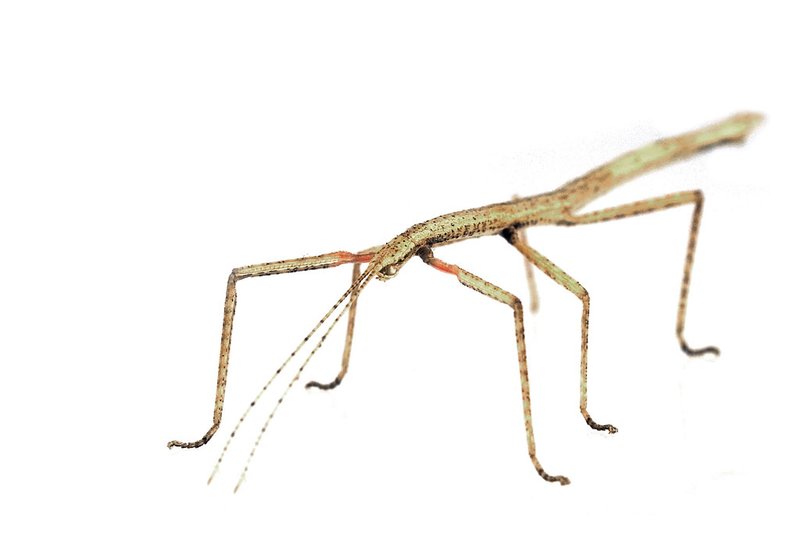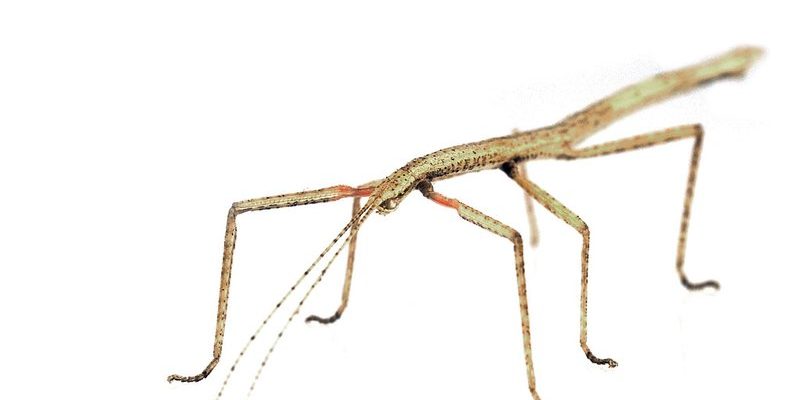
The world of insects is filled with wonders, but few are as intriguing as the Indian Stick Insect. Often mistaken for a branch or twig, these remarkable creatures have perfected the art of camouflage. Imagine walking through a dense forest, and amidst the lush greenery, a stick seems to wiggle. It’s not just a twig; it’s a living organism that has adapted seamlessly to its environment. This unique ability to blend in not only helps them avoid predators but also makes observing them quite a challenge.
If you’ve ever been fascinated by the idea of nature’s tricks, the Indian Stick Insect is a prime example of how survival instincts can shape behavior and appearance. With their long, slender bodies and predominantly green or brown hues, they look just like the twigs and branches they call home. But there’s more to this creature than just its looks! Let’s dive deeper into the life of the Indian Stick Insect and uncover its secrets.
Appearance and Characteristics
The Indian Stick Insect, scientifically known as Carausius morosus, boasts a striking resemblance to the vegetation around it. Typically, these insects are elongated and can grow up to 10 centimeters in length. Their bodies are adorned with a rough texture that mimics the bark of trees, and their limbs often resemble twigs, which isn’t just for show. This superb camouflage serves a vital purpose—protection from predators like birds and lizards.
In terms of coloration, the Indian Stick Insect displays varying shades that range from deep green to dark brown. This color variation helps them blend into their surroundings, making them nearly invisible. Interestingly, they can also change shades slightly depending on the environment, allowing them to adapt even more effectively. Their antennae are long and segmented, resembling tiny twigs, which adds to their disguise.
Beyond their appearance, these stick insects exhibit a number of fascinating behaviors. For example, they are primarily nocturnal, meaning they are most active at night. During the day, they remain motionless, which is crucial for their survival. When threatened, they may drop to the ground and remain still, hoping to go unnoticed.
Habitat and Distribution
You’ll find the Indian Stick Insect in the tropical and subtropical forests of India, though they are also distributed in other parts of Southeast Asia. They thrive in environments rich in greenery, as this not only provides them with food but also offers the perfect backdrop for their camouflage. Their favorite spots include dense foliage, where sunlight filters through leaves, creating a mosaic of shadows and light that further conceals their presence.
The habitat of the Indian Stick Insect is vital for its survival. They prefer areas with abundant food sources, primarily consisting of various plants and leaves. Their diet is quite specific; they mainly feed on the leaves of plants like bramble and rose. This selective eating is essential for their growth and reproduction, as a well-fed female is more likely to produce healthy eggs.
As urbanization increases, the natural habitats of these insects are threatened. Loss of biodiversity and deforestation can lead to a decline in their population. Conservation efforts are key to ensuring that the Indian Stick Insect continues to thrive in its natural environment.
Diet and Feeding Habits
So, what exactly does an Indian Stick Insect munch on? These fascinating creatures are herbivores, which means their diet mainly comprises leaves. They particularly enjoy tender leaves from plants like bramble, rose, and other shrubs. Their long bodies allow them to easily navigate and reach the foliage that is out of reach for many other insects.
Feeding usually occurs during the night when the risk from predators is lower. The Indian Stick Insect uses its strong mandibles to chew leaves, and interestingly, they can consume a significant amount of vegetation relative to their size. This feeding behavior not only sustains them but also plays a role in the ecosystem by helping to keep plant growth in check.
It’s worth noting that these insects can also survive without food for long periods, which is a helpful trait during droughts or when food is scarce. However, a nutritious diet is crucial for reproduction. Female stick insects require proper nourishment to produce healthy eggs, as this directly influences the next generation’s survival.
Reproduction and Lifecycle
The reproductive cycle of the Indian Stick Insect is quite interesting. Females are typically larger than males and possess the ability to reproduce without mating, a process known as parthenogenesis. This means they can lay fertile eggs without needing a male! However, when males are present, they may still mate with females to ensure genetic diversity.
After mating or through parthenogenesis, the female lays eggs that resemble seeds or small pebbles, blending into the forest floor’s detritus. This clever adaptation helps keep them safe from potential predators. Depending on environmental conditions, these eggs can hatch in several weeks to months, giving rise to tiny nymphs that look like miniature versions of the adults.
The nymphs go through several molts, shedding their exoskeleton as they grow. This process can take several months before they reach full maturity. During this time, they continue to rely on their camouflage to evade predators and hunt for food. The lifecycle of the Indian Stick Insect is a remarkable journey from tiny nymphs to fully formed adults, each step shrouded in nature’s clever disguises.
Behavior and Adaptations
The Indian Stick Insect has various behaviors that enhance its survival. Camouflage is their primary defense mechanism, but they also exhibit other fascinating adaptations. For instance, when they feel threatened, they may drop from their perch onto the forest floor and remain motionless. This behavior mimics a fallen twig, making it difficult for potential predators to spot them.
Another interesting behavior is their ability to mimic the movement of leaves swaying in the wind. When they gently rock back and forth, they create the illusion of a branch caught in a breeze. This clever trick can further confuse predators and increase their chances of survival. It’s amazing how nature equips these insects with such effective survival tactics!
Additionally, their nocturnal lifestyle helps reduce the likelihood of being seen. By remaining still during the day, they can blend into the foliage, while their nighttime activities allow them to feed and reproduce with reduced risk from daytime predators.
Conservation Status
The conservation status of the Indian Stick Insect is quite complex. While they are not currently considered endangered, their populations are affected by habitat loss due to urbanization and agricultural expansion. The destruction of their natural habitats puts pressure on local populations and can lead to declines.
Conservation efforts are critical to ensuring that these insects continue to thrive. Initiatives aimed at preserving tropical forests and promoting biodiversity play a significant role in protecting the Indian Stick Insect and its habitat. Supporting these efforts helps maintain the delicate balance of ecosystems where these creatures play a part.
Raising awareness about the importance of biodiversity and the role of insects in our ecosystems is also key. By educating people about the fascinating life of the Indian Stick Insect, we can foster a greater appreciation for these creatures and encourage positive actions towards their preservation.
Interesting Facts
| Scientific Name: | Carausius morosus |
| Length: | Up to 10 cm |
| Diet: | Herbivore; feeds on leaves |
| Habitat: | Tropical and subtropical forests |
| Lifespan: | 6-12 months |
| Reproduction: | Sexual and parthenogenetic |
FAQ
Are Indian Stick Insects good pets?
Yes, Indian Stick Insects can be good pets for enthusiasts willing to provide proper care. They are relatively easy to maintain since they require minimal space and have a straightforward diet. However, like any pet, it’s essential to research their needs, including habitat setup and feeding, to ensure they live a healthy and happy life.
How long do Indian Stick Insects live?
Typically, Indian Stick Insects have a lifespan of about 6 to 12 months, depending on environmental conditions and care. Factors such as diet, temperature, and humidity can significantly influence their overall longevity.
What do Indian Stick Insects eat?
The diet of the Indian Stick Insect primarily consists of leaves. They particularly enjoy the leaves of bramble, rose, and other shrubs. Providing a varied diet can help ensure they receive all the necessary nutrients for growth and reproduction.
Can Indian Stick Insects change color?
While Indian Stick Insects can’t change color in the same way a chameleon does, they can slightly adjust their shade depending on their surroundings. This ability helps enhance their camouflage, making them blend in better with their environment.
How do Indian Stick Insects defend themselves?
Indian Stick Insects primarily rely on their impressive camouflage to evade predators. When threatened, they will often drop to the ground and remain still, mimicking a fallen twig. This behavior, along with their nocturnal habits, helps them stay safe from potential threats.
Do Indian Stick Insects have any predators?
Yes, like many insects, Indian Stick Insects have several natural predators, including birds and small reptiles. Their excellent disguise helps them avoid detection, but they are still vulnerable to these threats, particularly when they are young nymphs.
How can I help protect Indian Stick Insects?
You can help protect Indian Stick Insects by supporting conservation efforts focused on preserving their natural habitats. Additionally, educating others about the importance of biodiversity and the role insects play in ecosystems can foster a greater appreciation for these fascinating creatures.
Where can you find Indian Stick Insects in the wild?
Indian Stick Insects are commonly found in tropical and subtropical forests of India and parts of Southeast Asia. They thrive in areas with abundant vegetation, where their camouflage is most effective against predators.
Are Indian Stick Insects social creatures?
Indian Stick Insects are generally solitary creatures, preferring to go about their own business without much interaction. However, they do come together during mating season, but beyond that, they tend to be independent and don’t form social groups.
How do I care for Indian Stick Insects in captivity?
To care for Indian Stick Insects in captivity, provide them with a spacious enclosure that mimics their natural habitat. This includes adequate ventilation, humidity, and access to fresh leaves for food. Ensure the environment’s temperature is suitable for their wellbeing to keep them healthy and thriving.

